Reviews and reports. Рубрика в журнале - Arctic and North

Статья научная
At the 15th Congress of Anthropologists and Ethnologists of Russia, held in St. Petersburg at the end of June 2023, special attention was paid to the discussion of topical theoretical and practical problems related to scientific reflections and social practices of the institute of mentoring in the cultures of the Russian North. The report presented by the authors of this article at the Congress outlined the scientific results of research on the traditional institution of mentoring in the Old Believer societies of Karelians, Komi, Russian Ust-Tsilems, the “institute of grandmothers” in Kenozerye and Onega Pomorie, the ritual “mentoring” functions of Nenets shamans and Zyryan sorcerers, public practices of the spiritual guidance of the laity in the parochial community of the North Russian mir-zemstvo. The central place in the article is given to the presentation of the scientific results of the analysis of the forms, methods and directions of the mentoring activities of the Kenozerskiy National Park, which, relying on the ethno-cultural heritage of the traditional societies of the Ozernyy district, acts as a reference methodological school-laboratory, implementing a wide range of mentoring research and educational practices aimed at transformation of local territories into a socio-cultural space of creative dialogue and cooperation between the Park and local communities, training of leaders and activists of territorial public self-government (TPS), elaboration of regional strategy and local programs of spatial development of the Northern macro-region.
Бесплатно
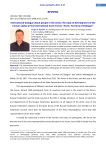
Статья научная
The International Arctic Forum “Arctic: Territory of Dialogue", held at the end of March 2017 in Arkhangelsk, has become one of the most representative events devoted to the Arctic issues in Russia in recent years. The business program of the event included a plenary session with the participation of the Presidents of Russia, Finland, Iceland, as well as 13 thematic sessions. The theme of the forum "People in the Arctic" was most actively discussed at four thematic sessions, as well as at the special event — the Forum of the Arctic Municipalities. The article presents the main results of the discussion of the participants of the event at the sessions "The Arctic is the territory of professionals", "The Arctic is the Territory of History, Culture and Tourism", "The Arctic is the Territory of Health", "The Arctic is the Territory of the Favorable Life Environment", and also at the Forum of the Arctic Municipalities.
Бесплатно
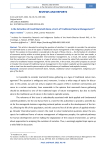
Is the Extraction of Fossil Mammoth Bone a Form of Traditional Nature Management?
Статья научная
This article is devoted to solving the question of whether it is possible to consider the extraction of mammoth bone as one of the types of traditional nature management of the indigenous peoples of the North. The solution to the problem is considered on the part of three criteria — the formation of a tradition of economic activity within an ethnic group, the focus of economic activity on use for their own needs, a balanced approach ensuring sustainable environmental management. As a result, the author concludes that the extraction of mammoth bone is a type of activity that cannot be called fully consistent with the criteria for traditional nature management. At the same time, in the article, the author proposes to consider broader the concept of traditional nature management in the modern capitalist world, supplementing it with a view from the world-system analysis of the dichotomy of traditional and capitalist society.
Бесплатно
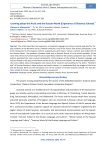
Learning about the Arctic and the Russian North (Experience of Distance Schools)
Статья научная
The article describes the experience of seasonal language and culture schools organized for foreign students at the Northern (Arctic) Federal University. One of the factors that attract participants is the Arctic component in the program content, acquaintance with nature, culture, customs and modern life of the Russian North. The pandemic situation made only a distance format of such schools possible. At the same time, the task of preserving the cultural specificity realized in the activity component was solved. The authors described the main content components of the program of the School of Russian Language and Culture related to the topic of the North and the Arctic: video tours of Solovki, the Museum “Malye Korely”, city tours (videos about Arkhangelsk), texts about Arctic research and travelling to the Arctic, “Northern text” of Russian literature, video lectures and master classes. It is emphasized that the images of the Arctic and the Russian North are the conceptual core of the content of remote seasonal schools. The next distance school of Russian Language and Culture is announced.
Бесплатно
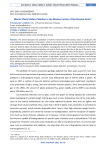
Marine plastic debris pollution in the western sector of the Russian Arctic
Статья научная
The article discusses the pollution of marine environment with plastic waste, in particular, the accumulation of microplastics in the oceans, which is one of the most serious environmental problems both in the world and in the Russian Arctic. Alongside with other world oceans, the Arctic Ocean and the Barents Sea have become places of plastic accumulation, causing great harm to the fragile ecosystem of the Arctic region. Researchers have found microplastics not only in Arctic waters, but also in the ice of the Arctic seas. Plastic debris is carried by ocean currents from more densely populated areas of the planet. Local sources, such as fishing and other commercial activities, as well as waste water, are one more reason. Microplastics adversely affect living organisms in the ocean. In particular, plastic can cause physical harm and disrupt body formation of marine animals, as well as cause death by suffocation or ingestion of plastic. At the same time, plastics can accumulate persistent organic pollutants on their surface, which can poison marine animals, damaging the entire food chain.
Бесплатно
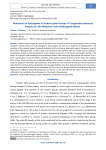
Статья научная
Student labor groups are one of the few forms of social activity of young people, which, having emerged in Soviet times, not only managed to revive again, but also has a tendency of steady growth. The activities of the student groups attracted attention both in historical and social aspects. However, most of the authors addressed only a certain stage in the history of the SCB-RSG and very rarely tried to conduct a comparative analysis of the development of the student movement in the Soviet and modern periods. The works of historians and sociologists and published studies reflect different ideas about the motives of students’ participation in the third labor semester. Some authors believe that the motives have not changed, while others think that they are completely different for modern students. The results of the conducted research, based on interviews, questionnaires, and analysis of the memories of veterans of the movement, show that the motives of the participants have changed slightly, since they depend primarily on the psychological characteristics of youth as a social group. At the same time, the peculiarities of society and state development in different historical periods put an imprint on the priorities and life values of youth, which is reflected in the motivation for participation in the student labor groups.
Бесплатно

Статья научная
The monograph is reviewing, which has been prepared by the team of the researchers of the Institute of History of SB RAS.
Бесплатно
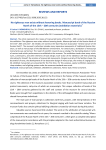
Статья научная
The article represents the review of manuscript books of the 15th - 20th centuries introduced at the exhibition “No righteous man exists without honoring books. Manuscript book of the Russian North of the 15th- 20th centuries”. All exhibits are stored at the State Museum Association “Artistic Culture of the Russian North”. The museum’s collection includes many impressive monuments of traditional Russian literature, as well as manuscripts of the Old Believer environment. For several years, attribution of manuscript monuments was carried out. The result of scientific research was a catalog. The fascinating books in terms of content and artistic performance are exhibited at the museum. The exhibition stands show many miniatures, screensavers, and other elements of book design. Each visitor of the exhibition will find something interesting for himself: the creation of manuscript monuments, the genre variety of the Northern book, the decoration of texts, the development of the decorative design of manuscripts, the variety of singing books. All exhibited manuscripts are presented for the first time. For this purpose, special exhibition equipment, shop windows, and a lighting system under the museum standards were used.
Бесплатно
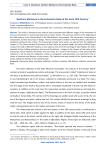
Northern Miniature in the Ecclesiastic Book of the Early 19th Century
Статья научная
The article is devoted to the study of plots associated with different stages of the movement of the soul, presented in a manuscript book and on drawn sheets. The book was written at the beginning of the 19th century in the Russian North in the Old Believers' environment. The manuscript is interesting in composition, content and unique in design. The text of the book is written on fifty-five sheets, collected in a notebook and bound into a book. The manuscript includes three works: an excerpt from the eighteenth chapter of "The Flower Garden of Dorotheus of Gaza" about the spiritual ladder, the vision of Monk Gregory about the walk of Blessed Theodora, a story about a meal from the teachings of Saint Niphon.The text is attached by four folding miniatures and several illustrations - images on the themes of the works of the manuscript, which interpret the literary text more fully. As a result of the research, it was found that this collection is not the only list. Collections, similar in composition and decoration, are contained in the archives of museums and libraries of the country. This indicates the book wealth of the Russian North, the artistic and genre diversity of the northern book.
Бесплатно
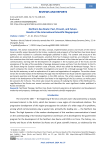
Northern Sea Route: Past, Present, and Future. Results of the International Scientific Megaproject
Статья научная
The author characterizes the idea, concept, implementation process and results of the international scientific project devoted to the history, modernity and prospects of the Northern Sea Route development, which resulted in a collective monograph published in 2022. The content and structure of this publication are presented, its participants, scientists from four European countries, are indicated. The author examines how this book reveals the most significant milestones of the historical past of this maritime communication, starting with the development of navigation in the European part of the Arctic and the emergence of the idea of the possibility of passage between Europe and Asia, from the Atlantic to the Pacific Ocean along the Eurasian northern coast of Russia, which was called the Northeast Passage. The research compares the results of scientific investigations and search for a through passage from Europe to Asia by this waterway, as well as exploration of its parts and organization of navigation. The author characterizes the transformation of the Northeast Passage into the Northern Sea Route and the organization of its permanent operation and through navigation in the 20th century. The article analyzes the contradictory trends in the development of the Northern Sea Route in the beginning of the 21st century, as well as possible scenarios for its future. The article also reveals the process of studying the history of the Northeast Passage/Northern Sea Route over several centuries and identifies the most significant studies published in Russia and abroad.
Бесплатно
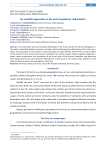
On scientific approaches to the Arctic boundaries’ delimitation
Статья научная
The article deals with the boundary delimitation of the Arctic and the territories belonging to it. The authors identified political, economic, and other factors influencing the delimitation of the Arctic terri-tories. The approaches of the subarctic countries Canada, the USA, Norway, and Denmark, to the problem of the borders of their Arctic territories are considered. The authors analyze Russian regulatory legal documents, expert assessments, the boundaries of the Arctic zone of the Russian Federation and determine their importance for the socio-economic development of the country. The authors draw attention to the need for Russia to protect its sovereignty in the Arctic.
Бесплатно
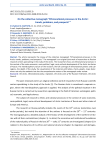
On the collective monograph “Ethnonational processes in the Arctic: trends, problems, and prospects”
Статья научная
The article represents the review of the collective monograph “Ethnonational processes in the Arctic: trends, problems, and prospects.” The monograph is an original joint work of researchers at Russian research centers specializing in the study of the Arctic. The researchers focus on ethnonational processes in the context of the socio-economic, socio-political, legal, socio-cultural development of the Arctic territories of Russia. The interdisciplinary nature of the research, the full coverage of ethnonational policies and subregions, the depth of the study, the visualization of the material with tables, charts, graphs, maps determines not only the academic but also the comprehensive nature of the monograph under review.
Бесплатно
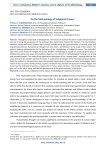
On the methodology of subglacial oceans
Статья научная
Throughout all periods of development, the history of mankind has been closely intertwined with the sea. Craving for perception of the unknown has always been favored for humans. The interrelations between people and water element were actively considered by the representatives of natural, exact and engineering sciences. Humanitarian thought can also make a contribution to the study of the oceans. The authors propose substantiation for the formation of the methodology of subglacial oceans. The methodology refers to the theory of thought and action. Modern methodology is capable of constructing the ways of thinking that solve new issues and problems. Openness to criticism of methodological thinking is its strong and promising aspect. The study of the exploration techniques of the “second space”, starting with the first steps and up to the modern attempt to create an underwater prototype of the International Space Station, leads the authors to the conclusion about the possible equivalence of space and Arctic technologies. Exploration of the ice cosmic worlds of Pluto, Jupiter and Saturn may precede the study of the Arctic region. The Arctic has the potential to become a testing site for future space missions. The sterility of space technologies can, on the other hand, provide the development of the green economy in the Arctic.
Бесплатно
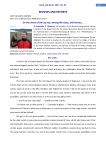
On the shore of the icy sea, among the rocks, and forests...
Статья научная
The article is devoted to the author’s trip to the village of Gridino (Northern Karelia, Russia). Oboimov A.P. tells about the life of the employees of the local weather stations, peculiarities of lifestyle of Pomor villages and the beauty of the Northern nature. The article is accompanied by a series of landscape and portrait photos.
Бесплатно
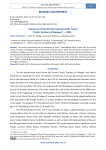
Outcomes of the 6th International Arctic Forum “Arctic: Territory of Dialogue” — 2025
Статья научная
The article summarizes the key outcomes of the 6th International Arctic Forum (IAF, the Forum) “Arctic: Territory of Dialogue”, held in Murmansk on March 26–27, 2025. The IAF became a platform for international dialogue on such issues as development of the Northern Sea Route, enhancing investment and entrepreneurial potential in the Arctic Zone, as well as environmental, humanitarian, and cultural cooperation. The Forum primarily focused on discussions of the state policy in the Arctic Zone of the Russian Federation (AZRF), aimed at the comprehensive development of the Far North and improving the well-being of the region’s residents.
Бесплатно
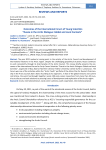
Статья научная
The year 2022 marked a turning point in the activity of the Arctic Council and development of international relations in the Arctic region. Despite the challenging geopolitical situation, Russia continues to work consistently through its chairmanship of the Arctic Council. This review briefly presents the outcomes of the International Forum for Early-Career Scientists “Russia in the Arctic Dialogue: Global and Local Contexts”, organized in May 2022 at Northern (Arctic) Federal University named by M.V. Lomonosov. The Forum was one of the activities within the “Arctic Youth” portfolio of the Action Plan for Russia’s Chairmanship in the Arctic Council 2021-2023. According to its organizers, in face of the global tensions and current restrictions, the event had brought together nearly 100 early-career researchers from more than 20 countries to discuss and seek solutions to pressing issues of development and exploration of the Arctic region.
Бесплатно
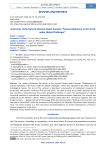
Статья научная
The review summarizes the results of the Russian-Chinese expert seminar “Development of Science Diplomacy in the Arctic under the Global Challenges”, which was organized in December 2023 in Arkhangelsk, Russia. The aim of the seminar is described: accumulation of intellectual resources of universities and scientific institutes of Russia and China. The need to unite the scientific potential of the two countries is determined by the current geopolitical context, in which the development of relevant functional solutions to international humanitarian issues becomes extremely important. The seminar was organized by the Northern (Arctic) Federal University named after M.V. Lomonosov together with the project partners — Beijing Institute of Technology (PRC) and the Association “National Arctic Scientific and Educational Consortium” within the framework of the project of the Alexander Gorchakov Public Diplomacy Fund. The event resulted in a final document (recommendations) on further development of Russian-Chinese cooperation in the Arctic.
Бесплатно
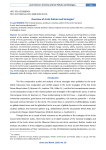
Overview of Arctic policies and strategies
Статья научная
The scientific report Arctic Policies and Strategies - Analysis, Synthesis and Trends delivers a holistic analysis of the policies, strategies, and declarations of relevant Arctic stakeholders, and new / emerging trends of Arctic governance and geopolitics at the 2020s. The analysis, using quantitative and qualitative methods, is based on a coding of the text of 56 policy documents (in 1996-2019). It considers how different Arctic actors address issues around the following indicators: human dimension, governance, international cooperation, environmental protection, pollution, climate change, security, safety, economy, tourism, infrastructure, and science & education. The study shows that the most-coded quotes of Arctic States' policy documents relate to Governance, Economy, International Cooperation, Human Dimension, and Environmental Protection included Pollution and Climate Change. Those of Indigenous Peoples Organizations explicitly address issues surrounding Indigenous rights, Governance and ‘Traditional knowledge.' The most-quoted indicators of Observer states are Science & Education, International Cooperation and Economy. The overall trends of Arctic governance and geopolitics are: i) Ambivalence of Arctic development, including ‘political inability,' whenever a balance is sought between environmental protection and economy; ii) The domination of states within the Arctic territory due to geopolitical stability and sovereignty vis-à-vis globalization; iii) Focus on science for problem-solving due to climate change; iv) Close interrelationship between the Arctic and Space (digital security, meteorology) due to globalization and rapidly advancing climate change in the Arctic.
Бесплатно
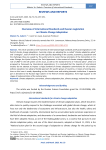
Overview of International Standards and Russian Legislation on Climate Change Adaptation
Статья научная
The article provides a brief overview of international legal standards and Russian legislation in the field of climate change adaptation. Currently, states are adopting the so-called “climate adaptation plans” and “strategies”, each of which has its own specifics depending on the country, economics, population and the challenges they are caused by. The author aims to reveal the key provisions of the Convention on Climate Change, the Kyoto Protocol, the Paris Agreement in the context of climate change adaptation, the role of UNEP in the UN system on this issue, as well as the standard forms of “national plans”, which are proposed as framework by international organizations. It is concluded that the majority of international treaties do not attempt to impose a single standard of climate adaptation commitments for all countries without exception, but adopt a flexible approach for specific groups of countries. A review of existing practices on this issue is made, depending on the climatic zone and existing domestic institutions. A separate part is devoted to the Russian legal system in the field of climate adaptation, from legal support to the stages of implementation of the national plan.
Бесплатно
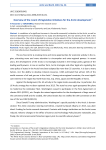
Overview of the recent US legislative initiatives for the Arctic development
Статья научная
In conditions of a significant increase in the world community’s attention to the Arctic, as well as intensive development of technologies for its study and development, the low activity of the USA in this area is noteworthy. The article is devoted to a review of some aspects of the US home policy in the Arctic. It also contains an analysis of two bills submitted to the US Congress aimed at increasing the economic presence in the Arctic region. The author notes the increasing scientific and practical interest of the Alaska political elites in the study and development of the Arctic.
Бесплатно

